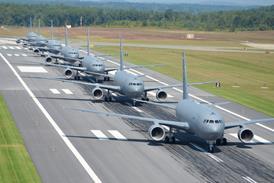The US Federal Aviation Administration will seek bids from communications systems manufacturers for the next phase of its Next Generation Air/Ground Communications (NEXCOM) programme later this year. The move follows the FAA's recent selection of ITT Industries Aerospace/Communications for the multi-mode radio for NEXCOM.
Manufacturers will be asked by the FAA later this year to bid for a competitive contract to build prototype radio interface unit (RIU) and ground network interface unit (GNIU) for NEXCOM demonstrations in 2003 and 2004. Jim Eck, the FAA's air-ground communications product team leader, says key site implementation of NEXCOM could be accomplished by the end of fiscal year 2007.
The FAA recently selected ITT Industries Aerospace/Communications over Raytheon to provide the radio component for NEXCOM in a contract initially worth $21 million. The 37,000 radios will be installed at 1,500 existing remote air-to-ground communications and back-up emergency communications facilities serving 21 air route traffic control centres (ARTCC) from 2003. The radio accommodates 25kHz analogue voice signals; an 8.33kHz analogue voice transmission; ARINC's VHF Data Link Mode 2; and the FAA's preferred VHF Digital Link Mode-3.
Meanwhile, one of two systems that Northrop Grumman's Logicon is providing to the FAA to even out the flow of air traffic has failed to meet expectations.
While the traffic management advisor has won praise, controllers are refusing to use the passive final approach spacing tool (pFAST), which provides runway assignments and landing sequence numbers for optimal runway loading. Controllers who have tested it say it generates poor aircraft tagging information and is unreliable, and suggest a redesign.
Source: Flight International























